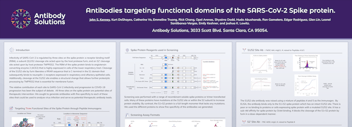1 min read
Therapeutic Targeting of Endothelial Ligands for L-selectin (PNAd) in a Sheep Model of Asthma
The homing of lymphocytes to peripheral lymph nodes is initiated by an adhesive interaction between L-selectin on lymphocytes and PNAd, a set of sialomucins that are constitutively displayed on high endothelial venules of lymph nodes. PNAd is defined by monoclonal antibody MECA-79 that recognizes a sulfated oligosaccharide carried by the sialomucins. This epitope overlaps with 6-sulfo sialyl Lewis x, a recognition determinant for L-selectin. Previous work has shown that administration of a L-selectin monoclonal antibody blocks both late-phase airway responses and airway hyperresponsiveness in a sheep model of asthma. We show here that airway-associated lymphoid collections from lungs of allergic sheep exhibited PNAd(+) venules as detected by immunostaining with MECA-79. The same vessels also expressed a GlcNAc-6-O-sulfotransferase known as HEC-GlcNAc6ST, which is known to contribute to the formation of the MECA-79 epitope in high endothelial venules of mouse lymph nodes. Intravenous administration of MECA-79 to allergic sheep significantly blunted both the late-phase airway response and airway hyperresponsiveness induced by airway allergen challenge. Furthermore, MECA-79 inhibited the accumulation of all classes of leukocytes in bronchoalveolar lavage fluid. These findings represent the first demonstration that targeting of PNAd has therapeutic efficacy in an inflammatory disease.
Authors
Steven D Rosen, Durwin Tsay, Mark S Singer, Stefan Hemmerich, William M Abraham





